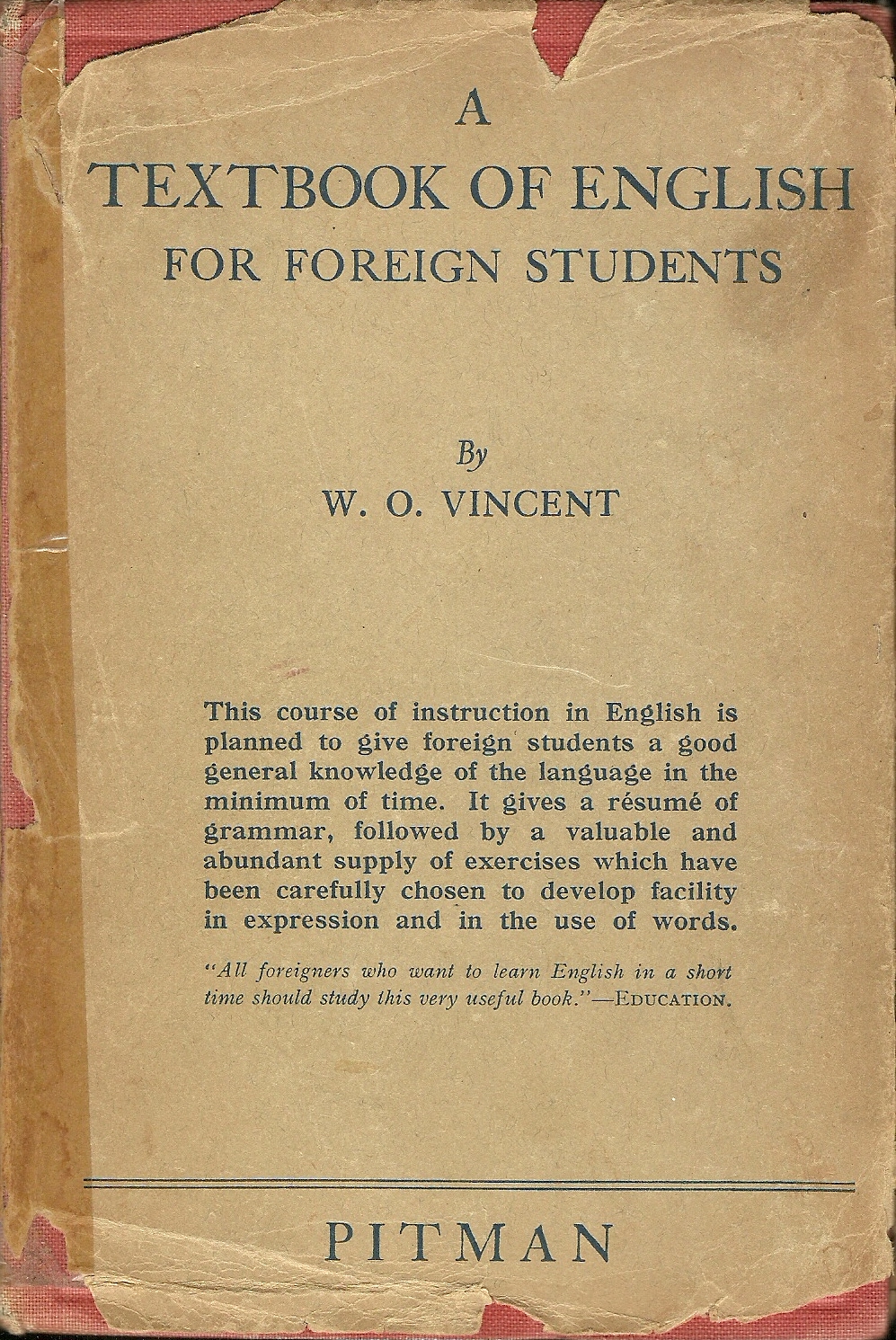 Tamás L?rincz, a teacher and teacher trainer, shares his tips for tackling English phrases in and out of the classroom.
Tamás L?rincz, a teacher and teacher trainer, shares his tips for tackling English phrases in and out of the classroom.
Do you know what Scotch Mist is? Honour bright? Before I started writing this post, I didn’t have a clue. I was off my head with joy to find a book on my bookshelf with 420 idiomatic, colloquial, and proverbial expressions, published in 1939. Have you ever entertained an angel unawares? Do you even know what it means? Before writing this post, I certainly didn’t.

W. O. Vincent
The chief purpose of W. O. Vincent’s A Textbook of English for Foreign Students was “to provide material for practice with words and combinations of words, so that the student is able to build up an extensive vocabulary, and to become familiar with their uses and shades of meaning.” (From the jacket blurb)
In the 74 years since this book was published, English teachers are still trying to achieve the same aim. Our job, of course, has become more complex. Coursebook authors and editors are very selective as to which turns of phrase to include in their books, while teachers are also careful to make sure that the idiomatic expressions they teach their students are relevant to their lives.
Of course, corpora are very useful in making such decisions, but they are ultimately time-bound. Some of them have been based on databases that are hundreds of years old and the frequency of appearance of certain phrases are not always an accurate representation of how language is currently used.
As teachers, we like checklists. So, let’s make a list of five things we can all do to make sure that the phrases we use and teach are not outdated.
1. Search
I know – obvious. Search engines like Google are one of the best ways of checking current usage. Just check the number of hits and it will tell you immediately whether you should bother teaching it or not.
2. Read
Yes, I’m going to be even more obvious now. Tabloids, regardless of your personal opinion of them, do feature a lot of language grounded in the colourful and flexible use of English. Handled correctly, they are an interesting classroom resource that can generate discussion about how and why specific phrases and expressions are used.
3. Sing
Check out the lyrics of some of the top 20 songs. Popular music is an inexhaustible supply. Just look at this week’s top single in the UK (Katy Perry’s ROAR at the time of writing). Katy Perry starts with two beautiful phrases your students will gobble up in no time:
“I used to bite my tongue and hold my breath…“
4. Watch
If you don’t want to hear Katy Perry ROAR (which I find absolutely understandable), you can watch a movie with your class as well. Even the worst movies are potentially valuable sources of current usage, interesting twists and turns of the language.
If you want something ready-made and reliable. Kieran Donaghy’s ELTon award winning Film English website gives you some fantastic opportunities to teach, practice and learn new phrases and expressions.
5. Socialise
Provided your students are digitally literate and know how to safely manage themselves online, you can help them find friends on Facebook and Twitter. Interacting with online friends can cause an explosion of new vocabulary, packed with up-to-date and intriguing phrases and expressions.
Google Hangouts and Skype chats are also fantastic tools for enabling your class to talk to new people, no matter where in the world they might be. Many teachers use Skype and Google Hangouts to connect with other classrooms around the world, giving their students valuable exposure to informal English.
You may have heard these suggestions before, and they are tried, tested, and produce positive results. (And there’s no point in re-inventing the wheel, as they say). We live in an age of global connectivity and lightning-quick access to information, yet it’s sometimes difficult to remember that English surrounds us, no matter where in the world we may be. With a bit of effort and willingness, we can enable our students to interact with others in English more easily, and give them the tools they need to understand and use idiomatic English more confidently.
And if you were hoping for a bonus suggestion, here it is: keep a lookout for a pretty good-looking smartphone application coming your way from Oxford University Press. From what I have seen – yes, I had a sneak peek; the perks of guest posting 😉 – it will be great fun for teachers and students alike.
Now over to you. What are your preferred ways of teaching phrases and expressions? Please share your tips with us in the comments to this post.


[…] Tamás Lőrincz, a teacher and teacher trainer, shares his tips for tackling English phrases in and out of the classroom. Do you know what Scotch Mist is? Honour bright? Before I started writing this post, I didn’t have a clue. […]
Wow!It feels great to see a piece that almost echos what I’ve lately been turning in and out of my head.My special thanks for the links and references you’ve provided in the post.
One suggestion for checking “to make sure that the phrases we use and teach are not outdated”? Plug them into a Twitter search tool to see just who is using them and how frequently “NOW”
Thanks for sharing Tamas. A suggestion – If anyone wants “to make sure that the phrases we use and teach are not outdated” .. try plugging a given phrase into a Twitter search tool and discover just how many people are using a phrase and how frequently it’s being used in the world…. NOW. Can’t get it more up to date than that.
Brilliant, Tamás! Reblogged it on ConsonantVoiced. Thank you.